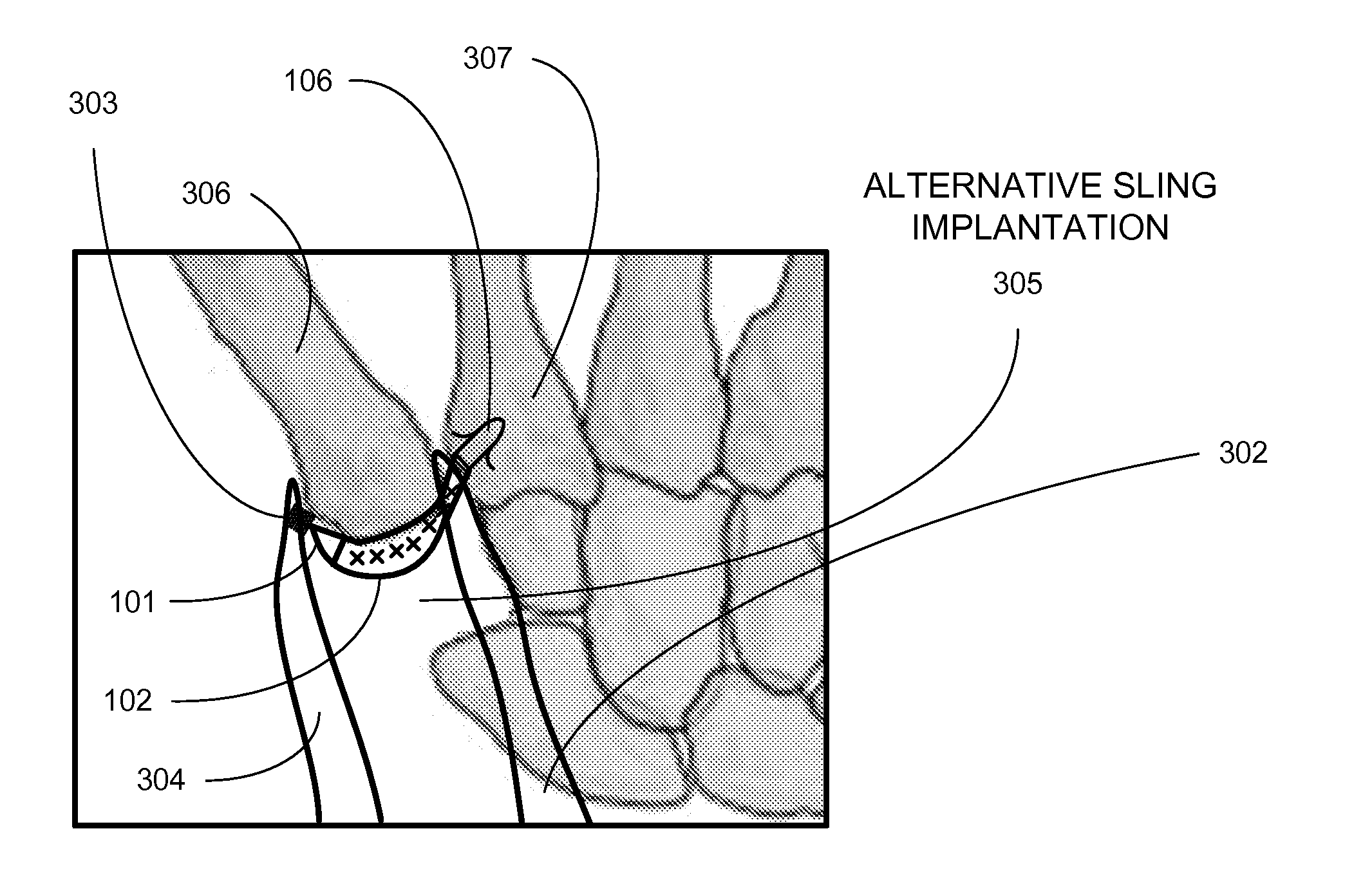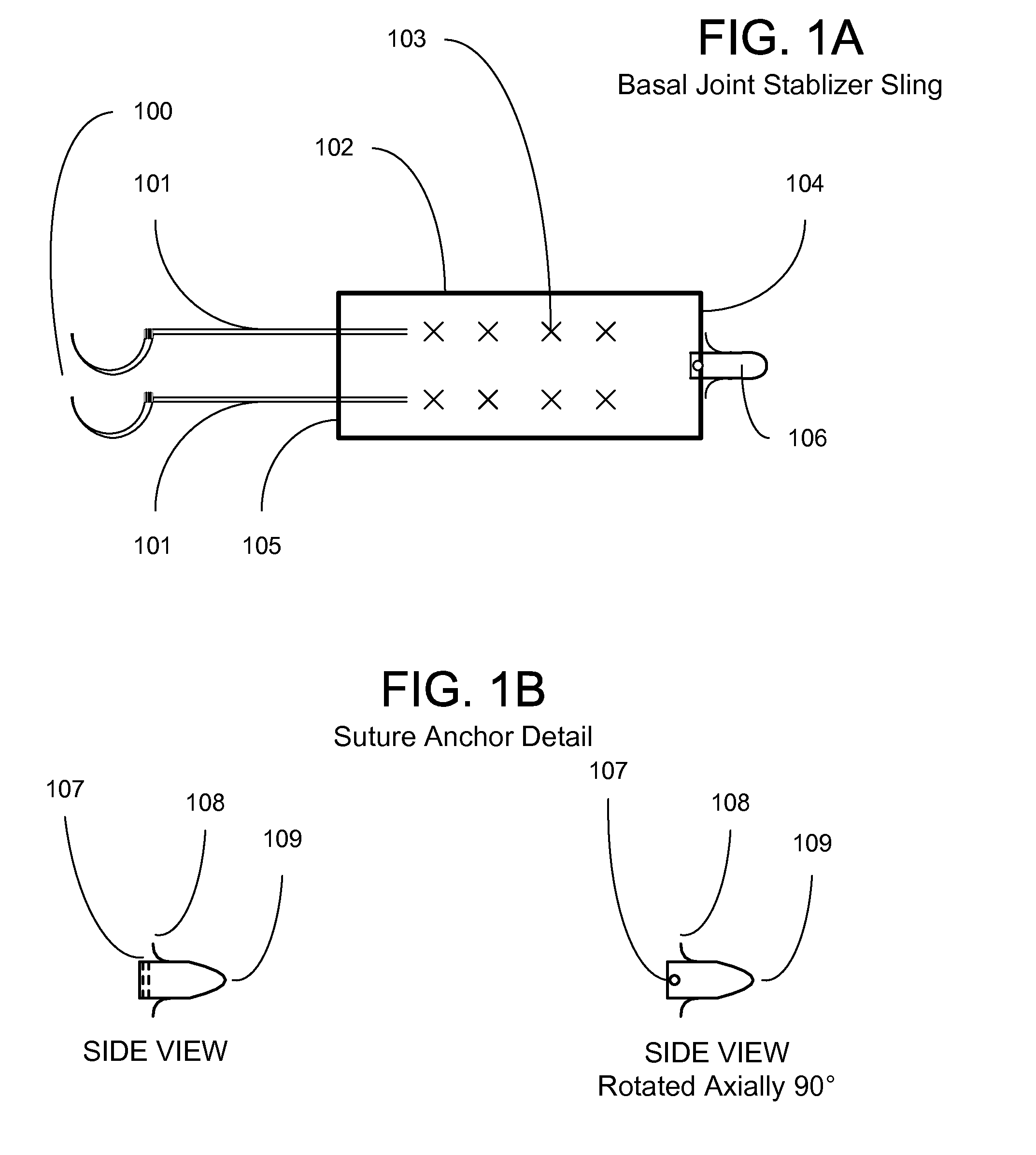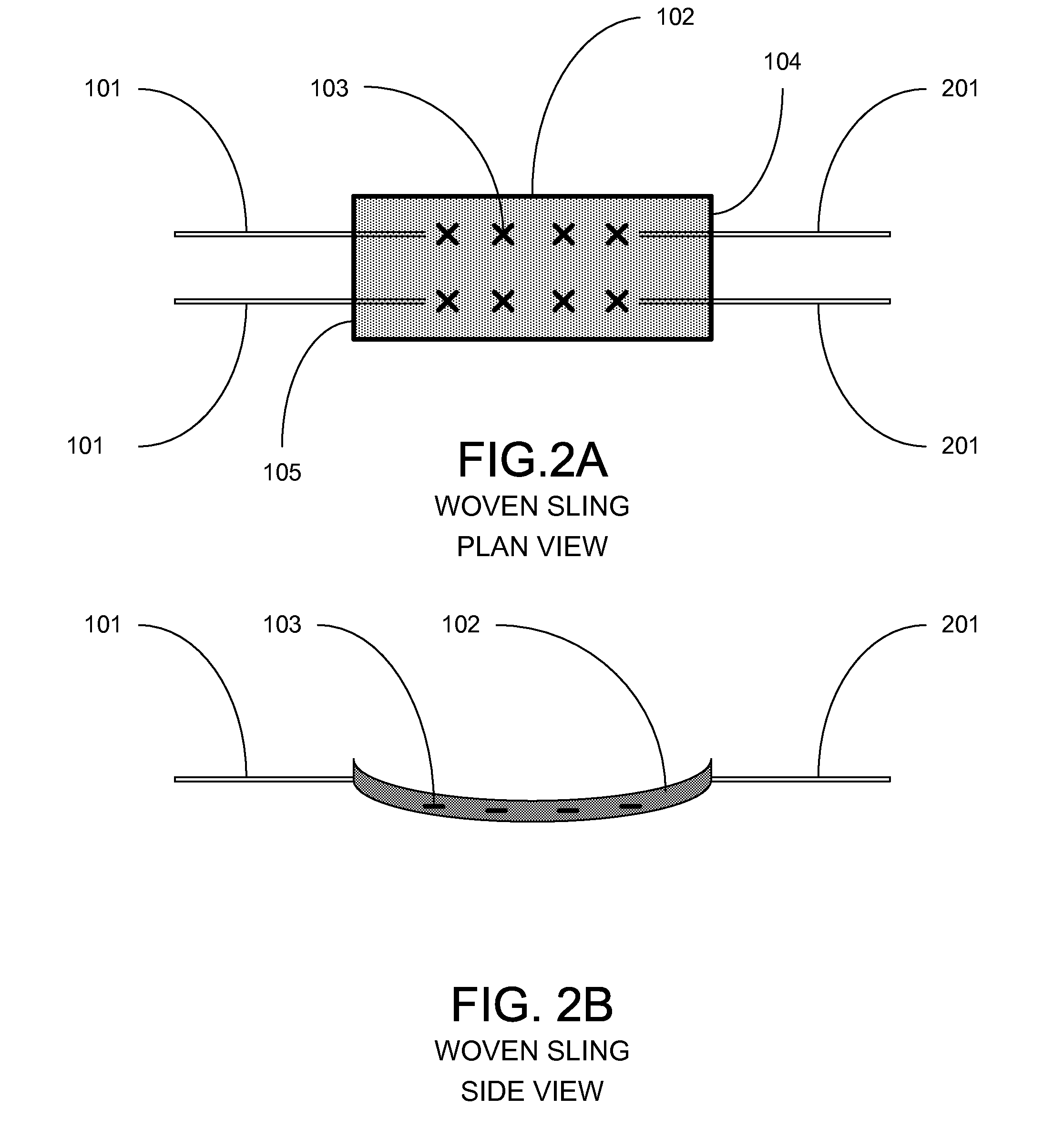This condition causes joint
instability and subluxation, due to incompetence of an important stabilizing structure, the volar oblique
ligament, resulting in dorsal subluxation, adduction
contracture, and subsequent compensatory metacarpal-phalangeal joint
hyperextension deformity.
As
arthritis progresses, patients suffer from load-related pain, affecting pinching and gripping activities, and experience
weakness, severe dysfunction,
reduced mobility, and loss of functionality.
Many of the past described
surgical methods require temporary pin fixation of the joint, subsequent pin removal and have been associated with pin tract complications, such as infection, nerve damage,
neuroma formation, and these methods which utilize more extensive and often multiple incisions cause increased surgical morbidity.
Each of these methods have had significant failure rates and complications related to
implant failure, fracture of the bone interfaces, particulate
synovitis,
dislocation and loss of stability over time.
Additional problems with the recently developed synthetic fabric inserted into the basal joint include
irritation over the synthetic fabric, which is secured to the dorsal base of the
thumb metacarpal, potential fixation problems, as well as the fact that the synthetic fabric design only addresses the distal
articular surface of the basal joint, leaving the proximal joint (scaphoid-trapezial joint) interface intact.
This particular form of synthetic
implant is limited in use for patients with very early arthritis, involving only the distal carpal-metacarpal joint and is not appropriate for the larger cohort of arthritic patients who suffer from arthritis in a more extensive, pan-trapezial (surrounding the trapezium on all
articular surfaces) fashion.
Long term results have been excellent with regard to
pain relief, but the healing process is lengthy, incisions are extensive and multiple,
subsidence with loss of
arthroplasty space has been reported, pin tract complications do occur, aid the technique is technically demanding, lengthy and requires sacrificing a normal, functioning
wrist flexor tendon.
This technique does not address
ligament reconstruction to restore function of the incompetent volar oblique ligament, and includes the disadvantages and risks of pin fixation.
This technique may not be appropriate for younger, higher demand patients.
This technique utilizes only one distally based slip of the abductor pollicis longus
tendon which does not sacrifice it'
s function, but does require an incision that extends proximal to the
wrist flexion crease and can be associated with some residual
wrist stiffness, as wrist immobilization is recommended for four weeks post-operatively which can result in a longer period of
recovery of wrist and
hand motion.
This technique does require excessive surgical skill, as it is technically demanding as it requires the skill of back-handed suture passing within a small
arthroplasty space.
In the case of artificial
joint replacement surgery, several complications may be encountered; including fracture, bosening, subluxation or
dislocation, particulate
synovitis and other reported complications that may result in eventual failure of the
implant.
Additionally,
surgical implants designed for other parts of the
human body have been difficult to adapt to basal
joint arthroplasty, due to the complex nature of the
anatomy of the basal joint, the arthritic deformity of subluxation and adduction
contracture that occurs with progression of basal joint arthritis, and the
cantilever forces applied across the metacarpal base.
More complex
soft tissue reconstructive methods for basal
joint arthroplasty can be associated with the potential for greater short and occasionally long-term impairment of the hand, requiring prolonged
rehabilitation.
 Login to View More
Login to View More  Login to View More
Login to View More 


